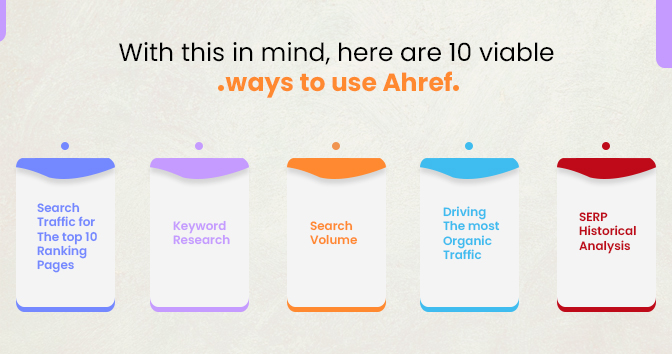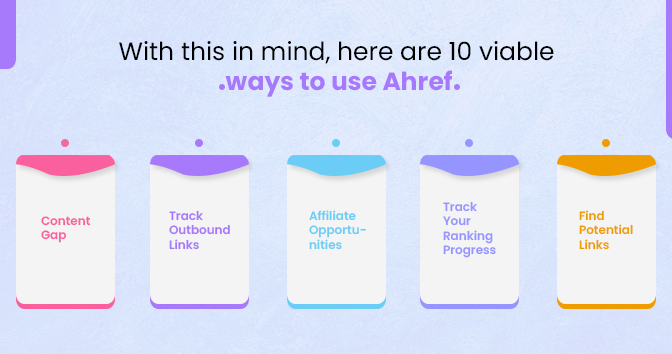


Many people ask what is ahrefs? Ahrefs is an SEO software suite that includes tools for link building, keyword research, competitor analysis, ranking tracking, and site auditing. Most of Ahrefs’ features are designed for marketers. Ahrefs is a popular SEO tool that people use to increase their Google rankings.
Ahrefs are primarily used to analyze website link profiles, keyword rankings and SEO status. Many people use Ahrefs to find content that’s performed well (in terms of social shares and/or links) on a given topic. When Ahrefs first started in 2011, it was primarily a tool for analyzing backlinks on a site.
Ahrefs’s feature set has grown over the years. Ahrefs is a link ahrefs seo toolbar that now grows into a full-featured SEO family that competes head-on with Moz Pro and SEMrush. Today Ahrefs is primarily used by the following
- Small business owners who will do SEO for their website.
- SEO agencies with multiple clients.
- Employers ‘in-house’ marketers who run marketing for their sites.
- Affiliate marketers with multiple sites.
- SEO consultants advising clients on SEO strategy.
After you figure out what ahrefs are, then you need to understand how to use ahrefs: Ahrefs has released a tool to check Google’s ranking, which is rich in visual features.
It’s one of several Ahrefs SEO tools that can help you increase search traffic, investigate and control your competitors. This means that too much can be done with our toolset, especially for Ahrefs beginners.
Contents
With this in mind, here are 10 viable ways to use Ahref:
- Get an estimate of total search traffic for the top 10 ranking pages:
- Do keyword research for 10 search engines:
- Going Beyond Search Volume with ‘Clicks’ Data
- Find out which subdirectories are driving the most organic traffic to your competitors
- SERP Historical Analysis
- Exploring the content gap between you and your competitors
- Track Outbound Links From Your Site
- Get new affiliate opportunities when using autopilot with Warning
- Track your ranking progress with Rank Tracker
- Find Potential Links with Content Explorer
With this in mind, here are 10 viable ways to use Ahref:



- Get an estimate of total search traffic for the top 10 ranking pages:
Most SEO professionals look at their target keyword’s search volume to predict a page’s potential for organic traffic. This is a problem because pages don’t tend to rank for a single keyword, and often rank for thousands of long-tail keyword variations.
“SERP Overview” report in Ahrefs Keyword Explorer to check estimated monthly organic search traffic to current top-ranking pages.
- Do keyword research for 10 search engines:
Most keyword tools only show Google data and metrics. This makes sense as they have a near-monopoly on the search engine market, but it’s important to remember that you can also get traffic from other search engines.
These are the supported search engines in Ahrefs Keyword Explorer: Google; YouTube; Amazon; Bing; Yahoo; Yandex; Baidu; Daum & Naver; Seznam.
- Going Beyond Search Volume with ‘Clicks’ Data
Keyword Explorer is the only keyword research tool on the market that goes beyond search volume and shows estimated clicks on research results. This is useful for assessing whether a keyword is really worth targeting. It calculates these metrics using our partners’ navigational route data.
- Find out which subdirectories are driving the most organic traffic to your competitors
The “Top Subdirectories” report in Site Explorer helps you better understand your competitor’s site structure competition, as well as which part of their site generates the most search traffic from a particular country. The site receives a lot of international traffic.
- SERP Historical Analysis
Before searching for a specific keyword, be sure to investigate the battles that have taken place among the top search results in recent years. This would suggest that the current top 5 rankings have been around for about 18 months.
Indicating that it would be a pretty good achievement to beat any competitor.
It’s another story for the “backlink checker” query. It would be worth analyzing their backlink profile and overall SEO strategy to get a clue as to how they did it.



- Exploring the content gap between you and your competitors
You’ve probably heard of the “content gap” analysis. This is where you look for keywords that your competitors rank for, but you don’t find. Many tools have this function. This is not unique to Ahrefs. What is unique about Ahrefs, however, is its ability to do this at the URL or subdirectory level.
- Track Outbound Links From Your Site
It is important to monitor your external links, especially when you have a team working on your site. For example, we recently hired a few freelancers to translate our blog posts into other languages. While going through the “Linked Domains” report shortly after, I noticed two minor issues.
- Get new affiliate opportunities when using autopilot with Warning
First, unrelated brand mentions. For those of you unfamiliar with this strategy, sometimes people mention (write about) your brand online but skip the link to your website. With Ahrefs Alerts, you can automatically find new brand mentions.
- Track your ranking progress with Rank Tracker
One of the many keywords that are important to your business, so we use tracking it in Ahrefs Rank Tracker. Rank Tracker allows you to add a list of keywords you want to rank for and track your daily/weekly ranking progress for any position.
- Find Potential Links with Content Explorer
Content Explorer is a searchable database of 1.1 billion web pages, with the following proprietary metrics: Domain Rating (from a parent site); Referral domain number; Organic search traffic; Word count; Date of publication; Date of update; Chapter; Alive / Broken; Author. There is no competition for this ahrefs free tools.
Also Read this – Search Engines and Social Marketing Parameters
Conclusion



That’s it — 10 real ways to use Ahrefs. These features were selected by comparing Ahrefs with other similarly priced all-in-one SEO tools. Chances are some of the lesser-known and more specialized SEO tools have one or more of these features.



